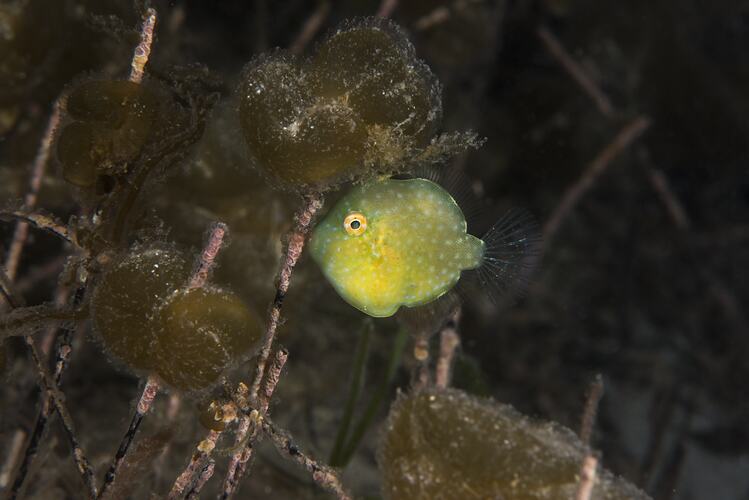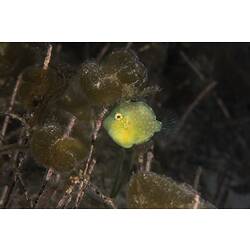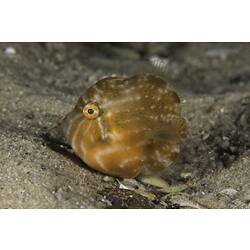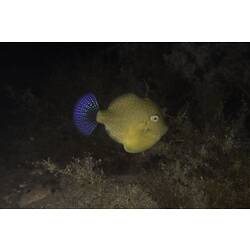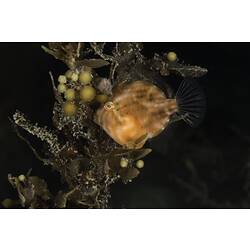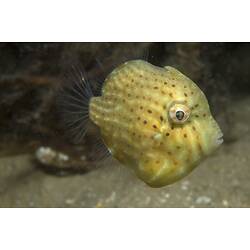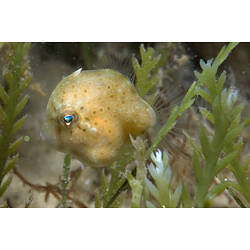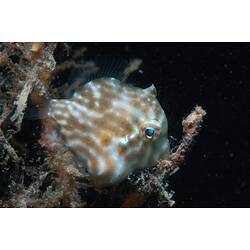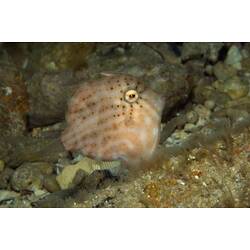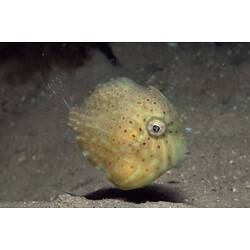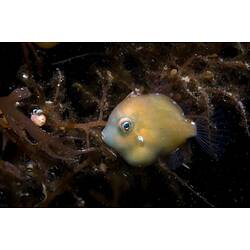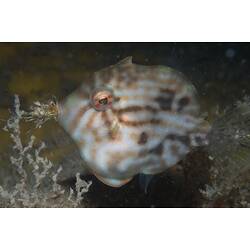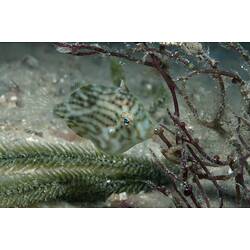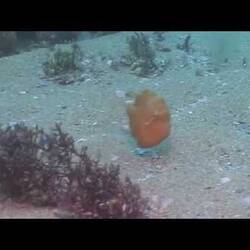General Description
Body almost circular, compressed, belly inflatable. Two dorsal fins, the first with two spines, first spine relatively short, slender with smooth edges, second spine very small; skin velvety. Colour pattern highly variable, usually greenish to brownish, with spots, lines and small ocelli (false eye-spots). Usually 4 cm long to tail tip (up to 9 cm long).
Biology
The is the smallest leatherjacket species in southern Australia. It occurs in a range of habitats, with large adults often found on rocky reefs. Unusually for a leatherjacket, this species inflates its belly for protection, and during territorial disputes between males. When 'sleeping', the Pygmy Leatherjacket anchors itself by biting onto a piece of seaweed.
Distribution
Southern Australia.
Habitat
Coastal reefs, as well as piers, jetties and seagrass beds within estuaries.
More Information
-
Animal Type
-
Animal SubType
-
Brief Id
Body compressed, almost circular, belly inflatable, dorsal-fin spine smooth, colour pattern variable.
-
Habitats
-
Diet
Carnivore
-
Diet Categories
Invertebrates
-
Endemicity
-
Commercial
Yes
-
Conservation Statuses
CITES: Not listed, FFG Threatened List: Not listed, EPBC Act 1999: Not listed, IUCN Red List: Least Concern
-
Water Column Locations
On or near seafloor
-
Taxon Name
-
Scientific Author
(Quoy & Gaimard, 1824)
-
Common Name
Southern Pygmy Leatherjacket
-
Kingdom
-
Phylum
-
Subphylum
-
Superclass
-
Class
-
Order
-
Family
-
Genus
-
Species Name
jacksonianus
